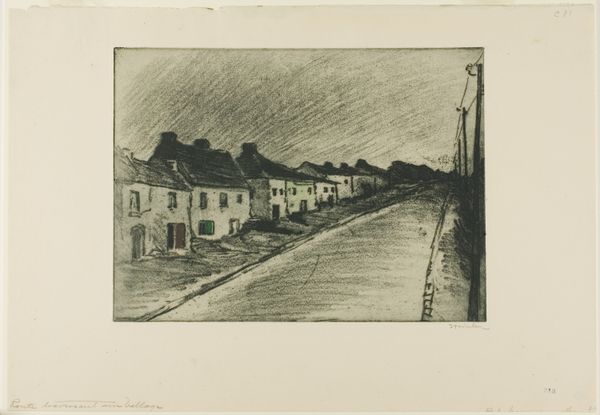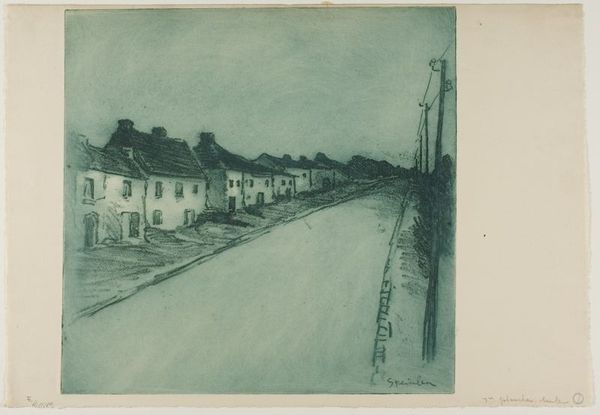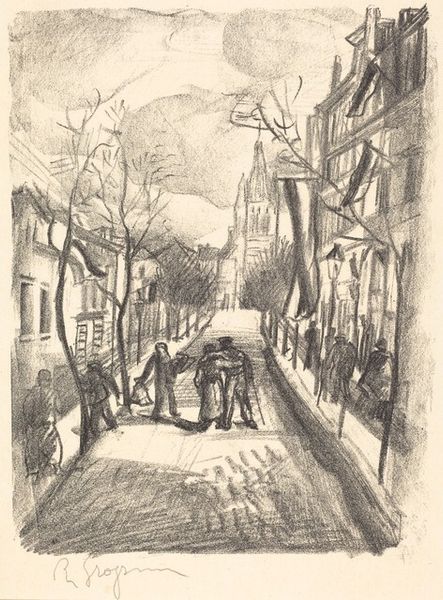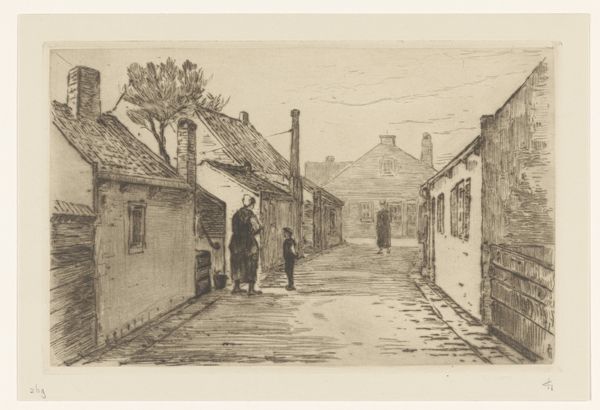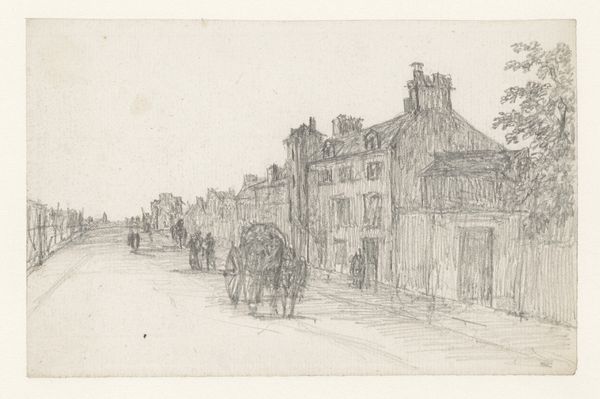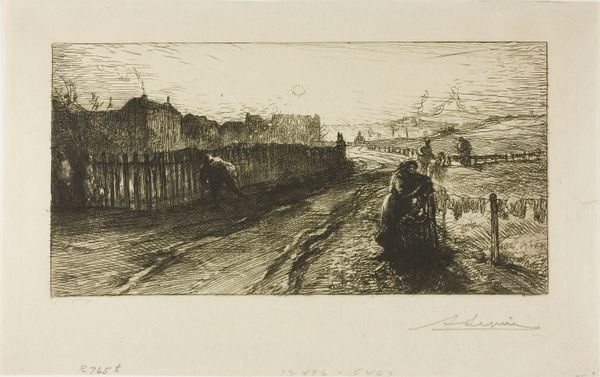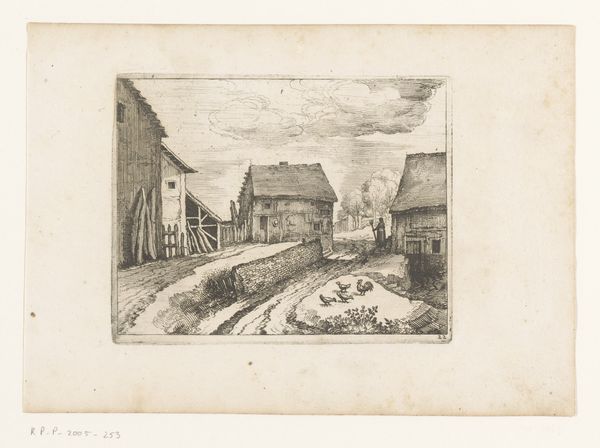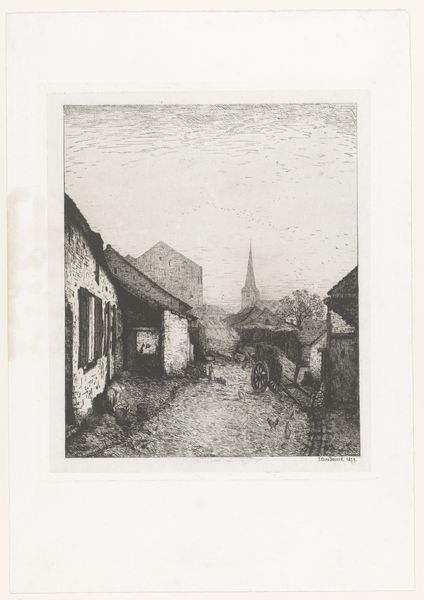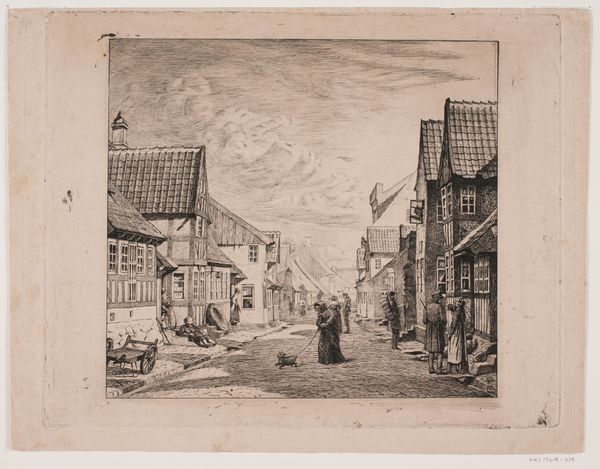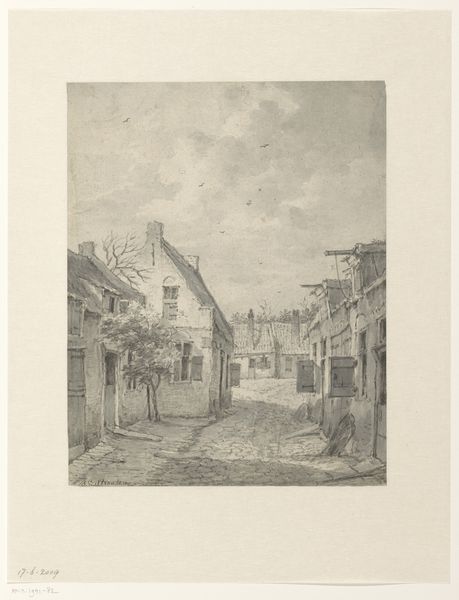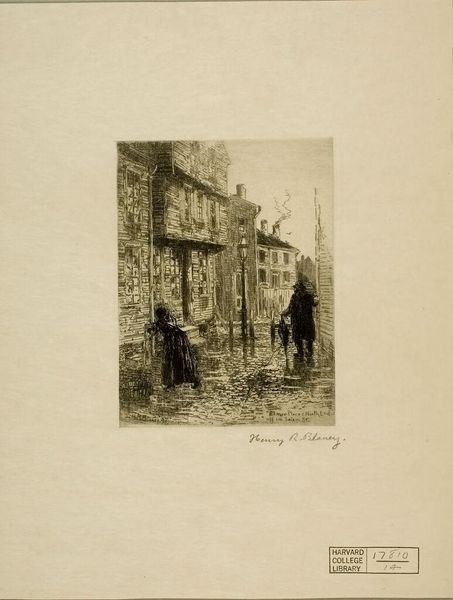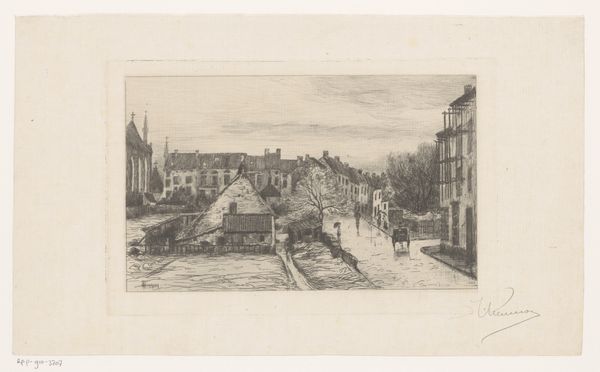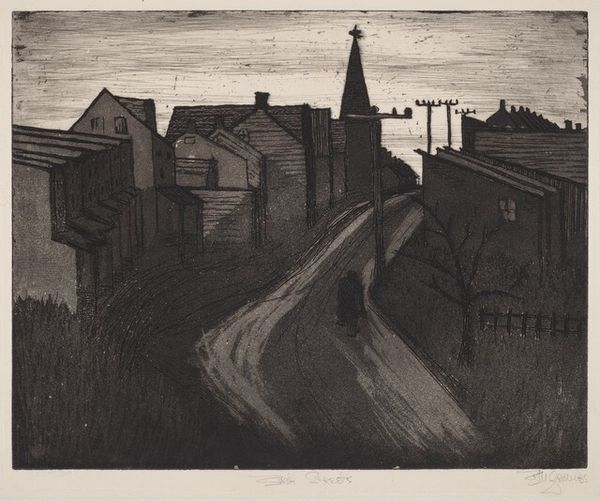
drawing, pencil, charcoal
#
drawing
#
landscape
#
charcoal drawing
#
pencil drawing
#
pencil
#
symbolism
#
cityscape
#
charcoal
#
realism
Copyright: Public domain
Curator: Welcome. We’re standing before Théophile Alexandre Steinlen's "Chemineau Traversant Un Village Endormi," a drawing from 1902 rendered in pencil and charcoal. Editor: My initial impression is… bleak. The palette is nearly monochrome, and the composition emphasizes a solitary figure trudging along a seemingly endless road. It speaks of isolation and perhaps economic hardship. Curator: Precisely. Steinlen was deeply concerned with social issues, particularly the plight of the working class in late 19th and early 20th century France. We see that concern manifest here in the presentation of a vagrant traveling with a walking stick and carrying a sack on his back, trudging along the edge of the street in a forlorn town. Consider the social structures that relegated people to such existence. Editor: Absolutely. And the materiality—the charcoal and pencil—further enhances the raw and gritty feel. There’s no pretension here. He is literally using inexpensive means to address class-based problems. It draws attention to his subjects by making art accessible through accessible material. Curator: The way he uses shadow is incredibly effective. Notice how the darkness looms not just overhead in the sky, but it permeates the road, nearly swallowing the figure. It represents, I think, the oppressive societal conditions bearing down on this person. Editor: True. But consider too how this seemingly simple technique elevates what would otherwise be a mere observation. It becomes imbued with emotional weight through the deliberate use and process of smudging, layering, erasing… all revealing a starkness to poverty and societal inequality. Curator: And the ‘sleeping village,’ a concept reinforced by the closed doors and shuttered windows, serves as a metaphor for society’s indifference towards those on the margins. A visual manifestation of systemic neglect. Editor: Yes, there’s a critical voice here, challenging viewers to confront the uncomfortable realities of the time. The very act of depiction can function as a social critique. I mean, look at how it has impacted the way you respond to this drawing now! Curator: Indeed, the piece invites us to reflect on questions of social responsibility and how art can serve as a vehicle for commentary. It encourages us to look beyond aesthetic qualities to appreciate Steinlen’s call for social awareness. Editor: Well, it also shows the value of raw material—how its simplicity and accessibility, worked by skillful hands, can create something profoundly meaningful. It connects with social history, but only through the tangible realities of material processes.
Comments
No comments
Be the first to comment and join the conversation on the ultimate creative platform.
